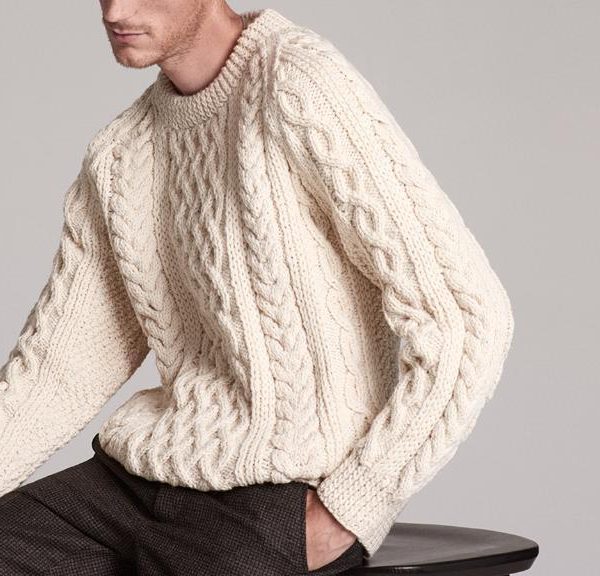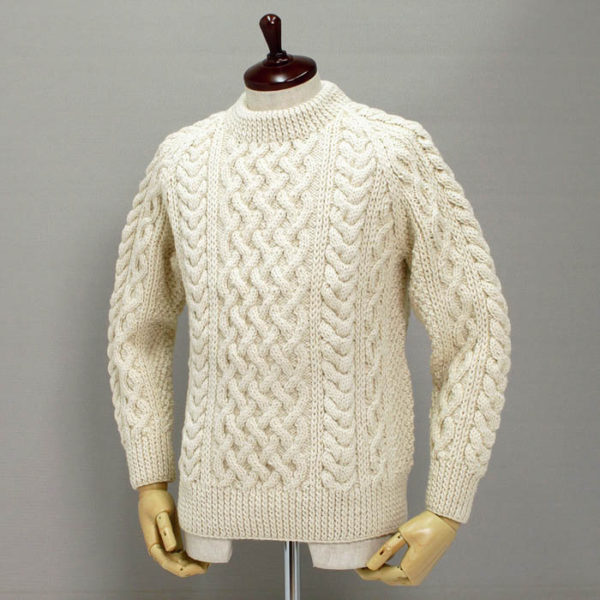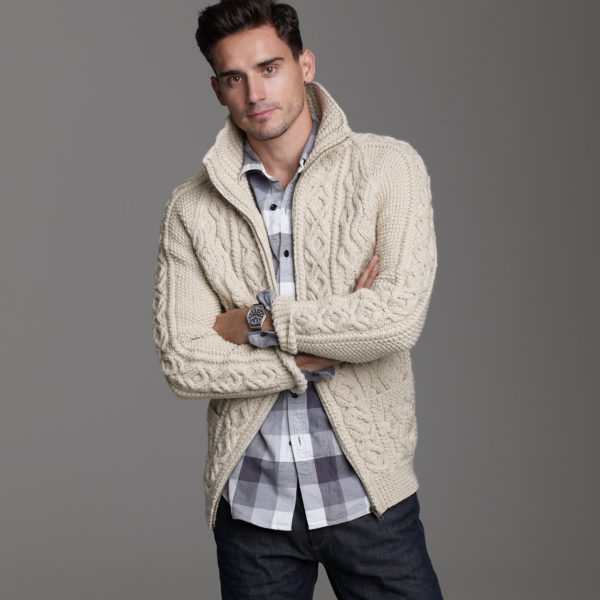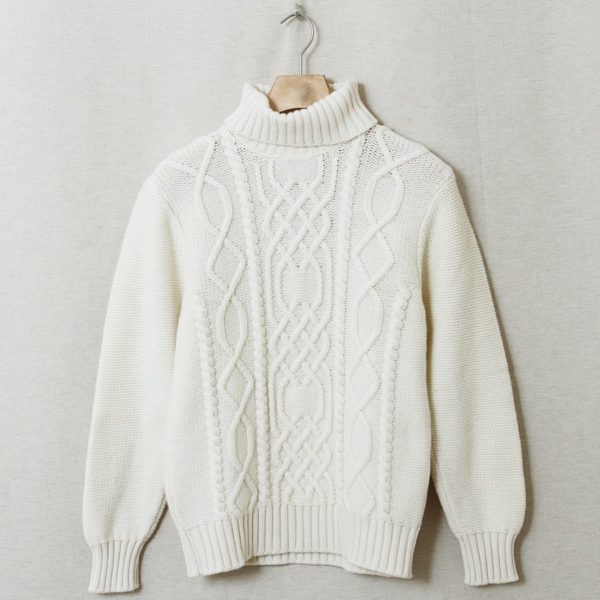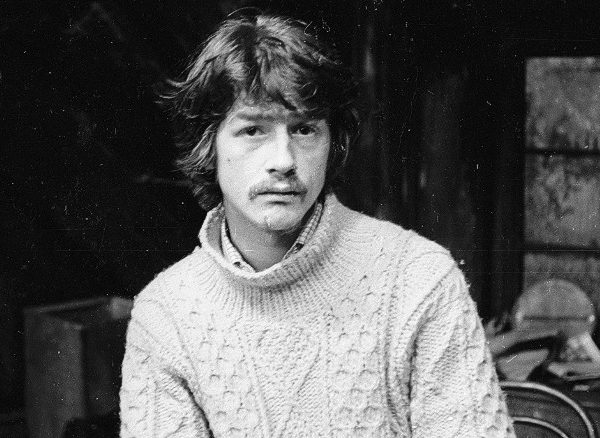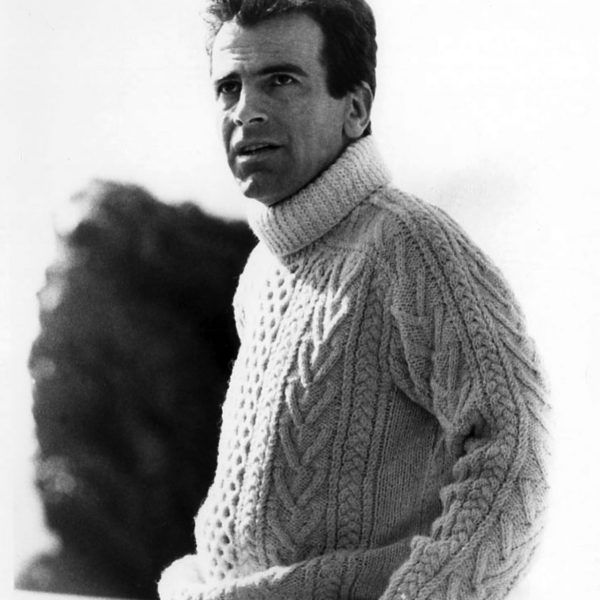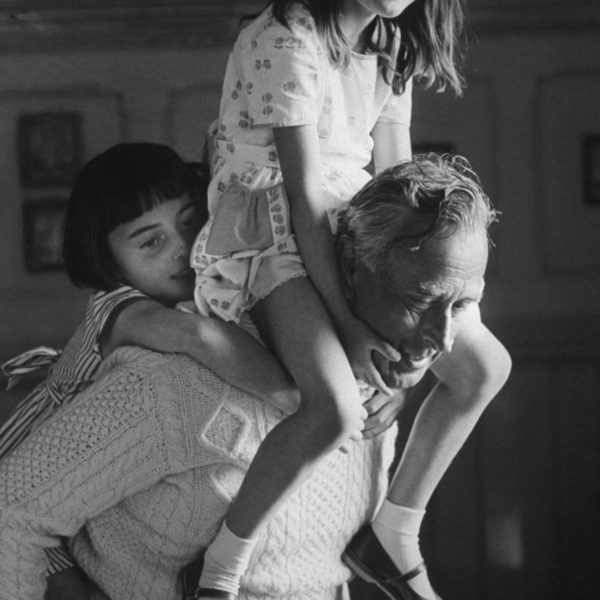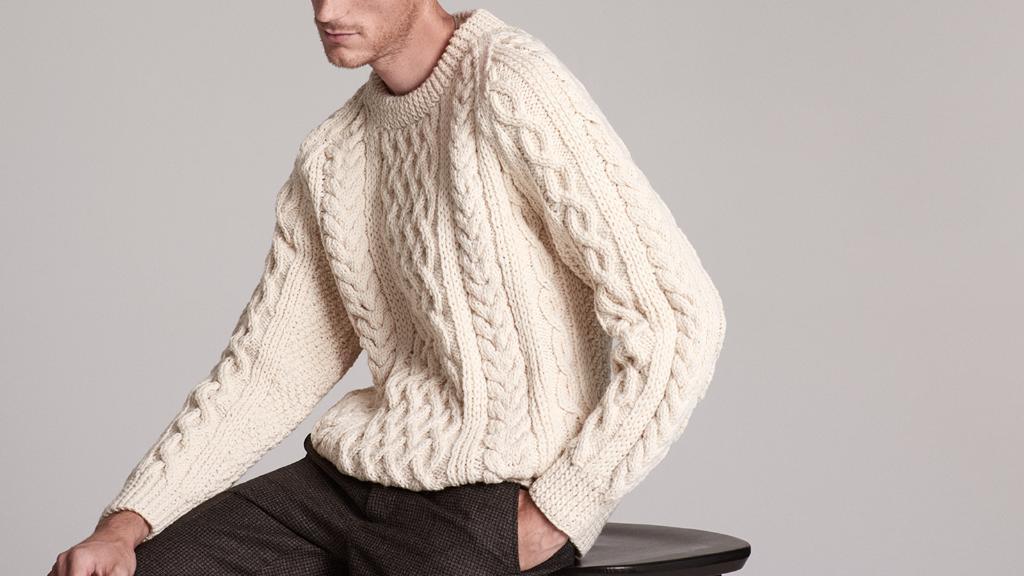
In his book, The Aran Islands, John Millington Synge wrote about the set of three islands located off the west of Ireland in graphic terms. It’s a beautiful read, and you come away from the book feeling waterlogged by the thunderous storms and crashing waves. Despite the violent sea-tempests, however, the Aran Islands are also described in beautiful and even idyllic terms. Women wear deep-red petticoats, bracken gleamed after the rains, and men put on thick wool sweaters when they set out to row together in curraches (a type of Irish boat that looks like a canoe).
The islands are still known today for those sweaters. Back in the 1930s, the Irish government made a concerted effort to promote handcrafted goods, which they felt could economically stimulate the region while also allowing many of the more remotely located citizens to work from home. And the plan worked — mostly. Aran sweaters are made through a sprawling cottage industry in the region, although there are also a ton of designer brands producing the same style offshore. Of the tourists who visit the islands, however, few leave without a sweater.
The great thing about an Aran knit is how it can be worn in almost any context. Which is especially useful if you’re just starting to build a wardrobe, as it’ll allow you explore different areas while developing your personal style. Aran sweaters pair naturally under waxed cotton Barbour jackets for more classic and heritage-inspired ensembles, but the same sweater can be used with trim topcoats, slim trousers, and side-zip boots for something contemporary. At the same time, given the sweater’s workwear heritage, you can use it for more rugged looks. Arans do wonderfully under stiffer, cotton canvas chore coats or slippery 60/40 mountain parkas. The unique cables and bobble stitches add visual interest where a plainer, smoother sweater might be too boring.
Below are five suggestions on where to find a good Aran knit, as well as tips on what to look for in terms of construction and fit.

Where to Buy
There are a million places nowadays to get an Aran style knit, ranging anywhere from mall brands to uber-lux boutiques. For starters, you can check in with trad shops such as O’Connell’s and The Andover Shop. If you’re near their brick-and-mortar stores, they also sometimes have deadstock in the back you can rummage through. Inis Meain, available at their online shop and No Man Walks Alone, sell authentic Arans made to a higher standard (better yarns, better construction, softer feel). Aran Sweater Market, O’Maille, Inverallan, LL Bean, Orvis, and Tails and the Unexpected are also worth a look. Connelly seems nice, even if the price is absurd.
Those are good if you want something with provenance (e.g. something made on the islands), but tons of brands make Aran-style knits outside of the region. J. Crew’s higher-end sub-line, Wallace & Barnes, had one a few seasons ago that I thought looked nice. Ralph Lauren and Brooks Brothers regularly stock them, as do contemporary labels such as APC. Many of these come in trimmer fits, which can be nice if you find a traditional Aran too baggy. The downside: unless you’re splurging on a top-end piece, these can sometimes feel flimsier and flatter than their authentic counterparts, but if you’re looking for a slim silhouette, you may not care.
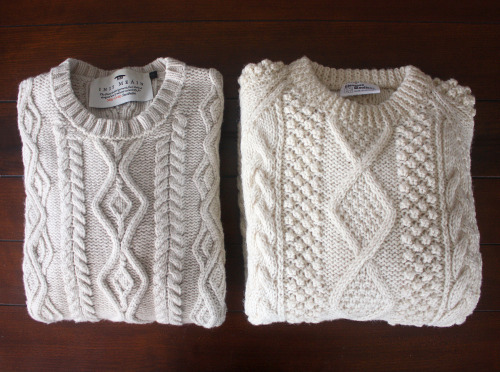
Construction
Very generally speaking, Aran knits can be made in one of three ways.
- Hand Knit: What you think of when you hear “handmade,” even though not all sweaters marketed as handmade are indeed hand knitted. Here, a knitter juggles two knitting needles in order to create a set of intricate stitches (some of which machines may not be able to handle). The results are sweaters that are often more textured than their machine-made counterparts, although a lot depends on the specific constructions. Today, the work is mostly done by elderly women in Scotland and Ireland, who knit sweaters at home for part-time pay.
- Hand-Operated Machine: A sweater made on a single-operator machine, where the operator can adjust the stitching pattern between rows. The best sweaters in this category are said to compare well to hand knitted ones, although sometimes they’re not as tightly knit. The upside: there’s less labor involved, so the resulting sweaters are a bit more affordable, and since they don’t require the complicate set-up of automatic machines, you can get custom one-offs. In the photo immediately above, the sweater pictured on the right is a deadstock sweater I bought from O’Connells that was made on a hand-operated machine.
- Automatic Machines: The most variable in quality, as you can find everything from ~$80 sweaters to luxurious $750+ pieces from the likes of Luciano Barbera. The difference is mostly in the quality of the yarns, density of the knitting, and if there’s any hand finishing. My Inis Meain Aran, shown on the left in the photo above, was made on an automatic machine, but knitted from better merino-cashmere yarns and then hand linked at the seams point-by-point. Still, generally speaking, automatic machine knits will be flatter and less textured than handmade sweaters – whether hand knitted or hand loomed – although again, a bit depends on the specific set-ups.
Personally, when shopping for one, I’d aim for something with more texture than less. Many of the more modern Arans you find at high-street shops have some nice cabling, but for the same money, you can get a vintage piece that’s been hand-knitted or hand-loomed to a higher standard.
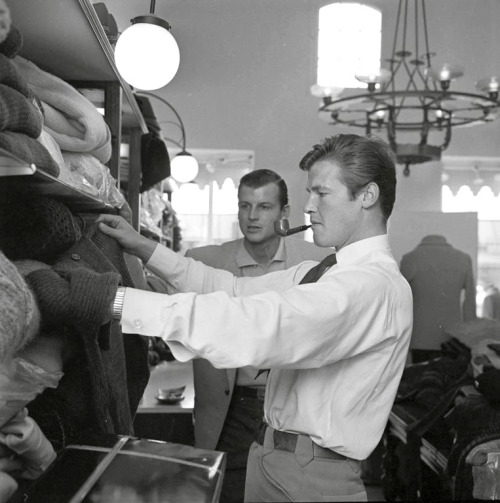
Going Vintage
The nice thing about Aran knits is that they’re hardy — often densely knitted from thick, sturdy yarns, which means vintage ones are typically in good condition. You can find them at thrift stores and eBay nowadays for anywhere between $25 to $75.
The only problem is the fit. Sometimes these are made to strange proportions that may not work in every wardrobe, so when buying online, pay attention to measurements and make sure there’s a good return policy. On eBay, you can search for brands such as Aran Crafts, Carraig Donn, Blarney Woolen Mills, and John Molloy, or just browse more generally for “Irish sweater” or “fisherman sweater.” So long as you can find one that fits well, those will be better than the Aran-style knits you find at shops such as American Eagle and The Gap.
A Word on Fit and Color
Don’t be afraid of going for a looser, more comfortable fit here. Arans often look better when they’re not hugging the body. If you need to adjust the length, a tightly knitted and banded hem will allow you to position the sweater where you want it. And while cream is your most versatile color, earthy browns, slate grays, moss greens, and deep blues can all be nice. Maybe start with cream and get a secondary color depending on how often you wear the first one. You may find you love these sweaters enough to get them in a few colors.
